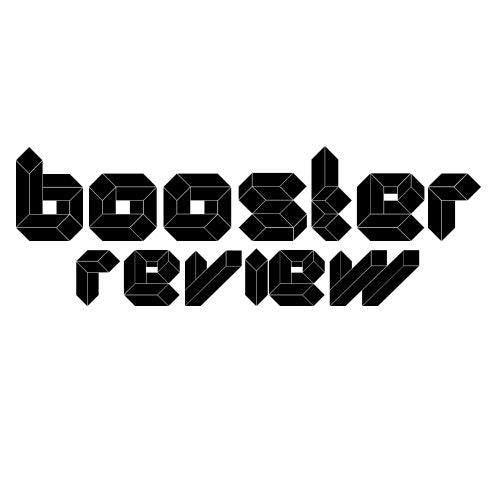In the digital age, where information and communication is dominated by technology, you might think that business cards have become a thing of the past. However, business cards continue to play an essential role in the business world, providing a tangible way to make a memorable impression and build professional relationships. This article will explore the relevance of business cards in an increasingly digitized world and show how you can integrate technology to bring more interactivity and utility. We will discuss options such as QR codes, NFC cards and digital business cards and introduce the Booster business card product, a modern and innovative solution.
The Relevance of Business Cards in the Digital Age
1. First Impressions Matter
In any professional interaction, the first impression is crucial. A well-crafted business card not only provides the necessary contact information, but also reflects the owner's professionalism and attention to detail. Even in the digital age, presenting a stylish business card can leave a lasting impression on your interlocutors.
2. Tangible Connection
Although many business connections are made online, people still appreciate the value of a tangible connection. A physical business card provides a tangible way to remember someone and connect later. This serves as a visual and physical reminder of the meeting, which can be especially useful in networking contexts.
3. Accessibility and Convenience
Business cards are affordable and convenient. They do not require access to the Internet or a digital device to share contact information. In addition, they can be quickly and easily distributed during face-to-face meetings, conferences and networking events.
Integrating Technology into Business Cards
1. QR codes
QR codes are a great way to integrate technology into traditional business cards. These codes can be scanned with a smartphone, providing instant access to a wide range of additional information, such as social media profiles, websites, online portfolios or even a digital CV.
Advantages of QR Codes:
- Easy to scan : Most smartphones have QR code scanning apps, making them easily accessible.
- Detailed information : QR codes can contain much more information than a traditional business card.
- Quick update : The information behind the QR code can be updated without the need to reprint the business cards.
2. NFC cards
NFC (Near Field Communication) technology allows the exchange of information by simply bringing two devices close together. NFC business cards contain a small chip that can store contact information and other details, making it a modern and innovative alternative to traditional business cards.
Advantages of NFC Cards:
- Fast transfer : Information is transferred instantly when the card is close to an NFC-enabled device.
- Durability : NFC cards are usually made of durable materials such as plastic and can hold up better over time.
- Interactivity : NFC cards can trigger specific actions, such as opening a web page or calling a phone number.
3. Digital Business Cards
Digital business cards like the Booster business card are another step forward in combining tradition with technology. They allow users to share contact information digitally through an online platform, offering superior flexibility and interactivity.
The advantages of the Booster Business Card:
- Real-time update : You can change contact information at any time, ensuring that your business partners always have the latest data.
- Global accessibility : Information is available online and can be accessed from anywhere, anytime.
- Extensive connectivity : You can integrate profiles from social networks, websites and digital portfolios, facilitating a complete connection with your brand.
- Sustainability : Reducing paper consumption helps protect the environment by reflecting your commitment to sustainability.
A sample digital book provided by Booster can be viewed here .
How to Combine Tradition with Technology
1. Integrated Design
It integrates technology into traditional business card design. You can include QR codes or NFC chips in a classic design, so you keep the elegance and professionalism of the physical business card, while adding a modern and interactive element.
2. Personalization and Branding
Make sure that both the traditional business card and the digital component reflect your brand's visual identity. Use the same colors, fonts and logos to create consistency and recognition. Personalization can include detailed information about you and your business, providing added value to those you connect with.
3. Dual Use
You can offer both a traditional business card and a digital one. For example, during a face-to-face meeting, you can offer the physical business card, and later send a digital version via email or text. This ensures that your contact information is always within reach of your interlocutors.
4. Education of the Public
Make sure your business partners and potential customers know how to use the technology built into your business cards. You can include short instructions on how to scan a QR code or use an NFC card. Educating your audience can increase the effectiveness and interactivity of these tools.
Conclusion
Business cards remain an essential tool in the business world, even in the digital age. Integrating modern technology such as QR codes, NFC cards and digital business cards can add extra interactivity and utility, making them even more valuable. By combining tradition with technology, you can create a complete and memorable experience for those you interact with.
Choose to integrate technology into your business cards and you'll see how they can become a powerful and effective marketing tool. We invite you to explore Booster business card and discover the advantages of a well-made digital business card. The digital model offered by Booster can be viewed here . Investing in modern and innovative business cards will reflect not only your professionalism, but also your commitment to business sustainability and innovation.






Shari:
How to Choose the Best Premium Business Cards for Your Business | Guide
Complete Guide to Creating a Business Card Template: Essential Steps and Tips | Check this